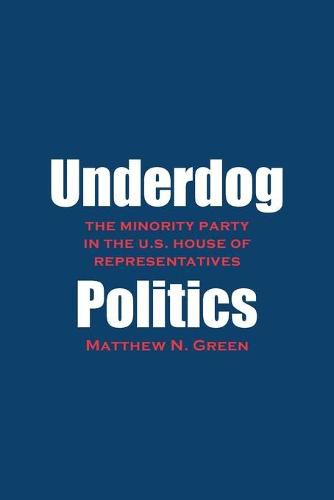Readings Newsletter
Become a Readings Member to make your shopping experience even easier.
Sign in or sign up for free!
You’re not far away from qualifying for FREE standard shipping within Australia
You’ve qualified for FREE standard shipping within Australia
The cart is loading…






In this comprehensive analysis, political scholar Matthew N. Green disputes the widely held belief that the minority party in the U.S. House of Representatives wields little or no legislative influence. Green has examined the record of House minority party members from 1970 to the present and offers empirical evidence of their important role in passing or blocking controversial legislation, often through active floor protests, press conferences, obstructionism, and other means. The author explores such spheres of minority influence as fundraising, candidate recruitment, and the shaping of public policy through well-orchestrated campaigns.
In addition to analyzing minority party voting behavior on key floor votes and procedural motions, Green supports his findings through information gleaned from a wide variety of original data, including documents and memos from congressional archives, media accounts, and personal interviews with current and former lawmakers and their staff. The result is the first systematic analysis of what the House minority party can do and why it does it, offering a clear and insightful picture of the inner workings of this famously contentious chamber of Congress.
$9.00 standard shipping within Australia
FREE standard shipping within Australia for orders over $100.00
Express & International shipping calculated at checkout
In this comprehensive analysis, political scholar Matthew N. Green disputes the widely held belief that the minority party in the U.S. House of Representatives wields little or no legislative influence. Green has examined the record of House minority party members from 1970 to the present and offers empirical evidence of their important role in passing or blocking controversial legislation, often through active floor protests, press conferences, obstructionism, and other means. The author explores such spheres of minority influence as fundraising, candidate recruitment, and the shaping of public policy through well-orchestrated campaigns.
In addition to analyzing minority party voting behavior on key floor votes and procedural motions, Green supports his findings through information gleaned from a wide variety of original data, including documents and memos from congressional archives, media accounts, and personal interviews with current and former lawmakers and their staff. The result is the first systematic analysis of what the House minority party can do and why it does it, offering a clear and insightful picture of the inner workings of this famously contentious chamber of Congress.